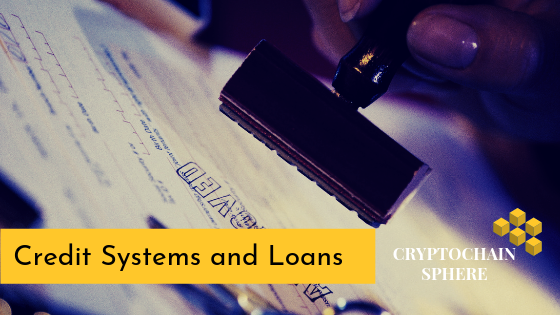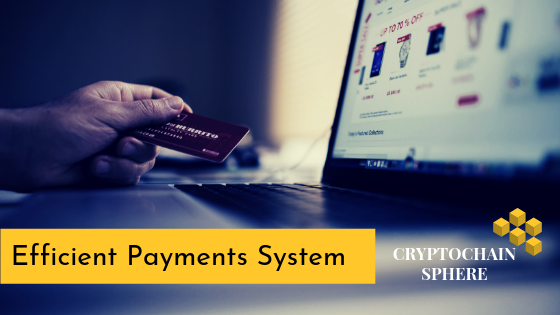Research Report | Impact of blockchain on payment systems, digital records, trade finance and syndicated loans

So far, if you've read an article about blockchain technology, you probably already know its potential. Bitcoin was born in 2009. At that time, the banking industry was experiencing a global financial crisis, which attracted the attention of the world. But is Bitcoin getting rid of its own flaws? Moreover, after the financial disaster, did the bank learn the lesson?
Today, we are not here to talk about it or to provoke right and wrong. Instead, why not combine the best of these two worlds and make a different product?
The underlying technology of bitcoin and cryptocurrency – the blockchain – is designed to address the underlying issues associated with the banking and financial industries. In fact, many banks and governments are exploring the use of blockchain technology in the banking and financial sectors, and the financial technology industry is keen to invest in this latest technology. But why?
- “Hyperledger Fabric is a fake blockchain!”
- Deep analysis of Blockstack regulations
- Institutional admission to the first portal! Bakkt will become a major driver of the cryptocurrency market
According to a Accenture study, blockchain technology can save the banking industry more than $27 billion annually by 2030.
Accenture's research found that by implementing blockchain technology in the banking infrastructure, banks can save more than $10 billion annually. The report also pointed out that the blockchain can reduce the cost of bank infrastructure by nearly 30%.
According to this article, 90% of European and American banks are already exploring blockchain technology.
A report by PricewaterhouseCoopers (PWC) shows that by 2020, 77% of existing financial institutions will use blockchain as part of the system.
Therefore, since we have already discussed the “why” part of the blockchain in the banking industry, let us focus on “how”.
In the past few years, the financial technology industry has made great progress. In the past, all of the bank's business was in physical locations, and now they are quite broad. We can naturally click on the smartphone a few times. As the world becomes more digital, financial institutions must keep up with the times.
However, we need to ask ourselves: Can the current banking infrastructure continue in the future?
Nearly 45% of financial institutions, such as stock exchanges, are prone to financial fraud every day. It takes a few days to transfer money from one place to another, not to mention the high cost of processing. Even after this, the settlement of funds and ledgers can take days, even months. Important information on trade finance is still being transmitted by fax, and millions of dollars are spent annually on investigations, such as KYC. Even after digitization, many banking infrastructures are still stored in documents and documents in the shaft cabinet.
All in all, the current banking infrastructure is very scarce in terms of sustainability.
Distributed ledger technology can save banks billions of dollars annually by reducing costs, enabling efficient and fast transactions, and providing a unified “book” copy on multiple platforms in an ecosystem. The fact-based immutable digital books have an impact not only on the financial sector, but also on many aspects of society.
1. Efficient payment system
Efficiency essentially means reducing costs while achieving optimal results. Therefore, in this case, an effective transaction means faster processing and lower cost.
Although we have reached the point where we can send money to others with just a few clicks, it is another matter to settle the same money in a matter of minutes. This applies especially to cross-border transfers with a settlement time of 3-7 days. The industry also involves multiple third parties to conduct such transactions across borders. With each share taking a share, transaction costs continue to increase.
Distributed ledger technology allows anyone to transfer and receive funds around the world in minutes. Bitcoin is the most popular proof of this concept. With the help of blockchain technology, funds can be transferred immediately across borders. Distributed ledgers provide a way for unfamiliar people to conduct effective transactions without the need for any third party. This eliminates the extra cost and reduces the hidden transaction costs.
2. Digital recording

Figure 2 Digital record
Currently, each bank has its own record. It includes a lengthy process, manual recording, and cumbersome methods with major flaws. Since it is still artificial, there are often wrong entries. Centralized distributed ledgers of banks are also vulnerable to fraud. This process is very long, so the settlement time may eventually take a few days.
Blockchain technology, or blockchain distributed ledgers, provides a very sustainable solution. First and foremost, distributed ledgers record entries for each transaction, and all stakeholder accounts are consistent. Any transaction or operation that is updated in one copy is updated in all copies of the entire platform. The distributed ledger is constantly updated in real time, and it remains the same – once it is recorded, it cannot be modified or deleted without the attention of other stakeholders. These entries have a permanent timestamp that anyone with the permission can access. Transparent and secure books on the banking platform can help save billions of dollars annually.
3. Credit system and loans

Figure 3 Credit system and loan
The application of blockchain technology to banking infrastructure has a wide range of applications in the areas of lending and credit. The existing traditional loan system is a credit system-based loan system, and individual credit (based on assets and past history) is assessed by the credit bureau. These central agencies record their credit history and use this as an basis to give them an equivalent credit score. This credit score determines whether an individual is eligible for the loan amount, loan interest, etc.
However, this ancient loan approval method also has its loopholes. Not everyone has their own credit history, so it is difficult to get a loan. Studies have shown that credit scoring is unfair and can have a negative impact on an individual's ability to obtain a loan. In addition, centralized credit rating agencies are prone to hacking and fraud. Even after the assessment and inspection, the loan default amount is still increasing year by year. The current centralized, biased, inefficient and ambiguous loan system is unqualified.
Blockchain technology provides a better assessment system for bank lending approvals. Blockchain technology supports an integrated system of global credit scores. An ecosystem of personal digital identities, approved assets, past payment history, legal records, time frames, and tax history—under one system. The blockchain-based global credit scoring system can be transparent, secure, and decentralized. The global credit score is based on documents verified and approved by the authorities, which greatly reduces the risk of fraud.
4. Trade Finance

Figure 4 Trade Finance
Trade finance ensures that international trade between import and export can be carried out quickly. Effective trade finance can reduce risks, prevent fraud, expand credit, and help two untrusted multinational companies to carry out productive trade activities. However, the current scenario still relies on previous methods, and the industry still uses manual documents and copies of the same documents. The settlement time between banks is long, but it is still paper. Physical letters of credit from one bank to another are still often used to ensure payment is received.
Distributed ledger technology can reach consensus among multiple parties.
This reduces the amount of files to be generated, and there is no need to keep going back and forth between parties in order to pass information. The distributed ledger automatically ensures that stakeholders receive real-time information updates, and the digital distributed ledger records every piece of information in the supply chain. The origin of the product, its history, the shipping movement, the delivery – each action is permanently recorded on the timestamp of the blockchain. Any party, with the appropriate authority, can access this information at any time.
Earlier, we discussed how to efficiently cross-border payments with the help of blockchain technology. Further, the blockchain in the bank, powered by smart contracts, can transform the most complex trade finance functions into simple and easy technologies. The blockchain will add value to the trade finance industry by ensuring the efficient flow of money and goods. A smart contract is a set of autonomous instructions that are executed when certain predefined conditions are met. In terms of trade finance, this smart contract can be implemented. This creates a value-based system – a system that focuses on the delivery of money and goods.
5. Syndicated loan

Figure 5 Syndicated loan
Syndicated loans, also known as syndicated bank loans, are financing provided by a group of lending institutions, called syndicated loans, which together fund a borrower. In the past few years, the number of syndicated loans has increased significantly.
The current process is time consuming and there are multiple intermediaries, including lead staff, syndicated members, organizations and banks – all in different places. Intermediaries such as agencies charge high fees due to risks and the management required for each link in the loan process. Even today, a lot of work is done by hand. Lack of technological innovation has increased the scope of fraudulent activities. In addition, delayed billing cycles can result in capital lock-in and increase default risk.
With the help of blockchains and smart contracts, the selection criteria for syndicated members become accurate and autonomous. Digital contracts and agreements can be verified by different stakeholders at every point. There is no need to create multiple documents with the same copy, and the financial structure can be integrated with digital identity checks such as KYC. Therefore, this helps to reduce the need for due diligence at each point.
6 Conclusion
Most of the discussion above is theoretical. Blockchain technology still has a long way to go when we practice it. At the same time, however, we cannot ignore the fact that it does have enormous potential in the banking industry. The current global banking and financial model is difficult to sustain. If we want to continue the industry, we need to introduce more innovations and technological changes in this industry.
Source: Hackernoon
Author: Cryptochain Sphere
Translation: Bitker Institute
Website: https://hackernoon.com/blockchain-in-banking-its-need-significance-and-value-or-cryptochain-sphere-lvu638yp
Disclaimer: This article was compiled by Bitker Research Institute. The Bitker Institute focuses on the research of vertical fields such as blockchain industry theoretical research, cutting-edge technology, and secondary market analysis.
We will continue to update Blocking; if you have any questions or suggestions, please contact us!
Was this article helpful?
93 out of 132 found this helpful
Related articles
- Bakkt plans to conduct user acceptance testing of hosting and trading today
- North drift girl invests in bitcoin: after adding 200,000 yuan, she is ready to borrow millions
- Understand the four core modules of the IRISnet economic model and re-understand the development path and potential value of IRISnet
- New York State updates the Property Collection Act to allow the government to confiscate unclaimed bitcoins
- Lawyer's point of view | Plus Token's illegal analysis and criminal identification
- Why is IPFS interesting?
- Segwit is about 2 years old, what impact does it have on Bitcoin?






